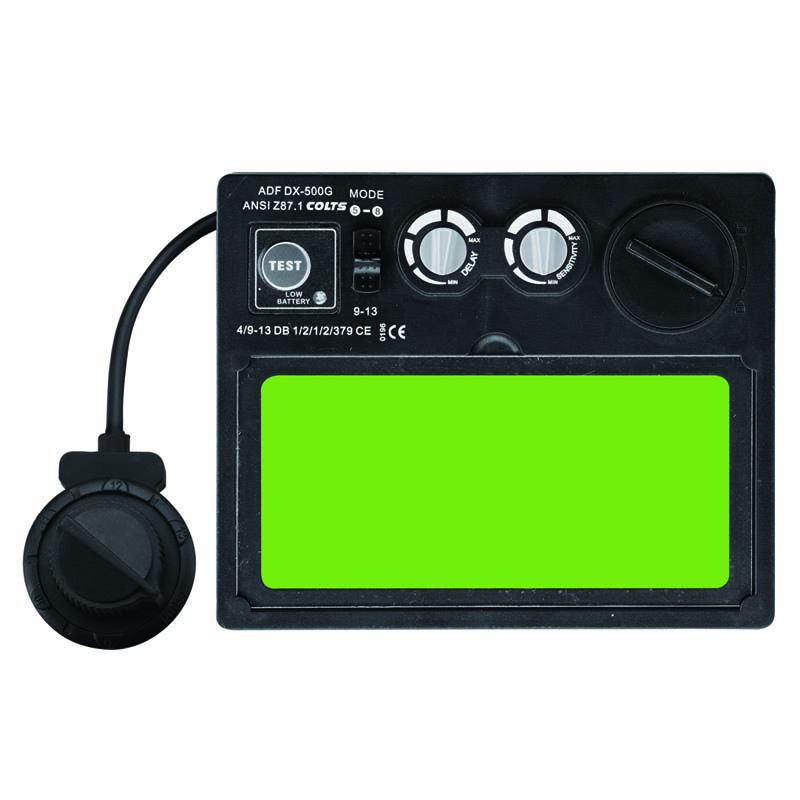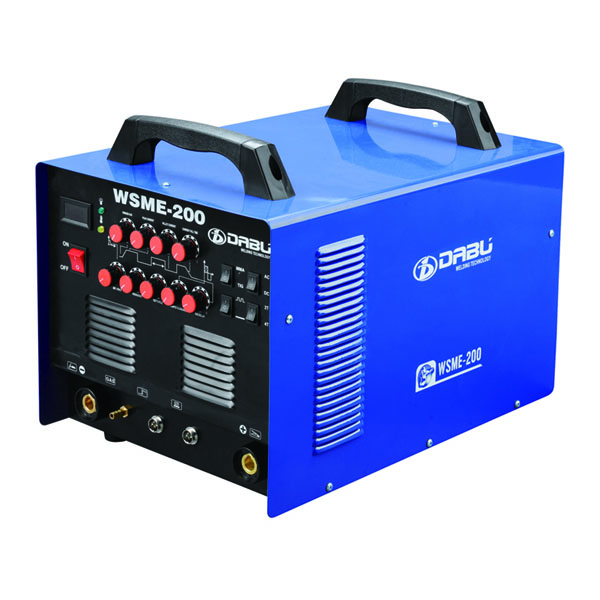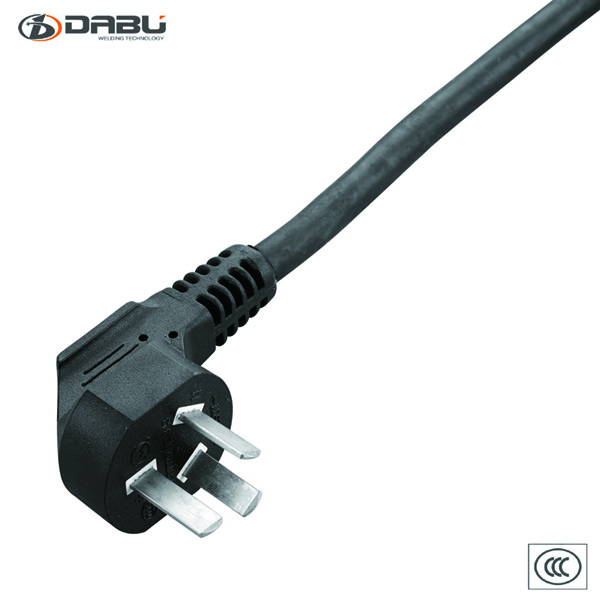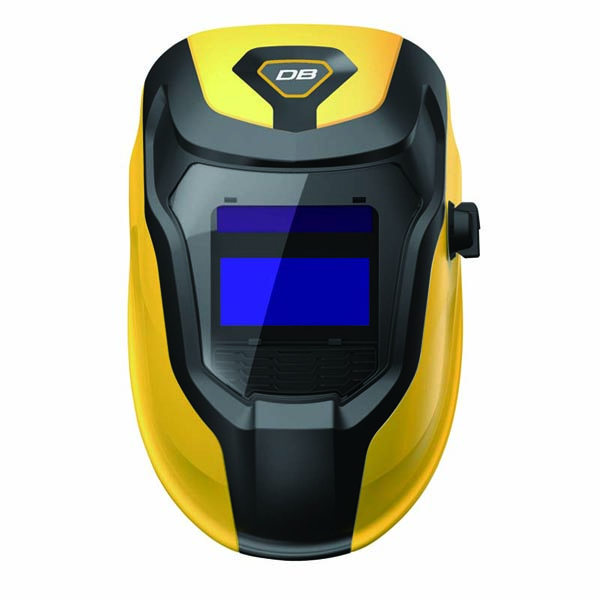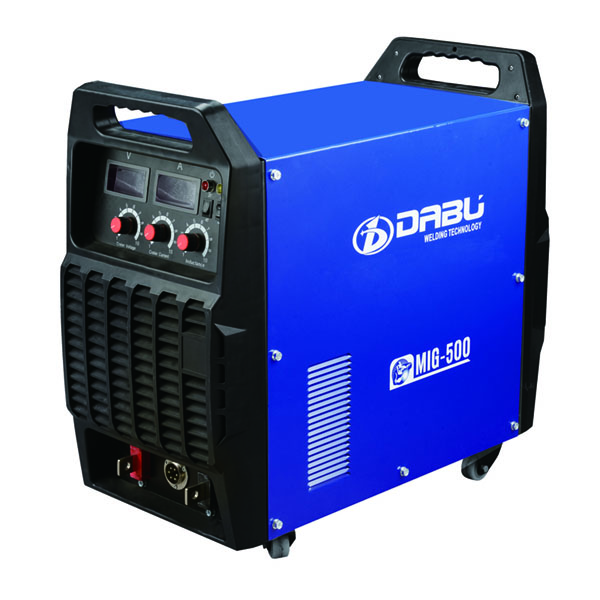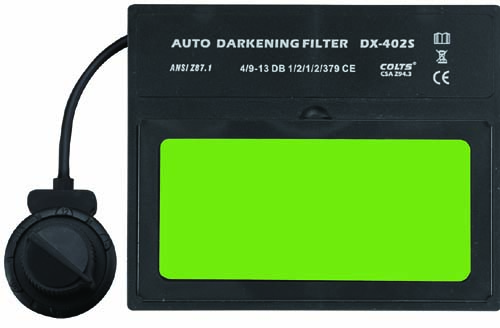
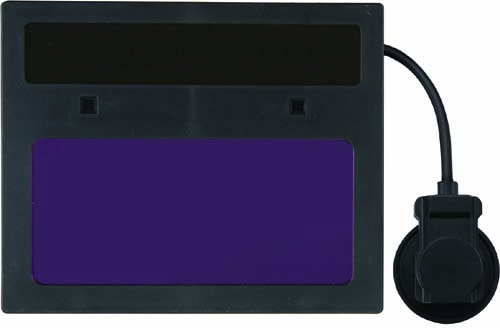
| Model | ADF DX-402S |
| Optical Class | 1/2/1/2 |
| Dark State | Variable, 9-13 |
| Shade Control | External, Variable |
| Cartridge Size | 110mmx90mmx9mm (4.33"x3.54"x0.35") |
| Viewing Size | 92mmx42mm (3.62" x 1.65 ") |
| Arc Sensor | 2 |
| Battery Life | 5000 H |
| Power | Solar Cell, no battery change required |
| Shell Material | PP |
| Headband Material | LDPE |
| Recommend Industry | Heavy Infrastructure |
| User Type | Professional and DIY Household |
| Visor Type | Auto Darkening Filter |
| Welding Process | MMA, MIG, MAG, TIG, Plasma Cutting, Arc Gouging |
| Low Amperage TIG | 35Amps(AC), 35Amps(DC) |
| Light State | DIN4 |
| Dark To Light | 0.25-0.45S Auto |
| Light To Dark | 1/15000S |
| Sensitivity Control | Non adjustable, Auto |
| UV/IR Protection | DIN16 |
| GRIND Function | YES |
| Low Volume Alarm | NO |
| ADF Self-check | NO |
| Working Temperature | -5℃~+55℃( 23℉~131℉) |
| Storage Temperature | -20℃~+70℃(-4℉~158℉) |
| Warranty | 1 Year |
| Weight | 460g |
| Packing Size | 33x23x23cm |

Welding helmets are available in two main categories: passive and auto-darkening. Passive helmets have a dark lens that does not change or adjust, and welding operators nod the helmet down as they start the arc when using this type of helmet.
In the category of auto-darkening helmets, there are xed shade or variable shade options. A xed shade helmet will darken to one pre-set shade — often a good option in applications where the welding operator repeats the same weld. With a variable shade helmet, the lens has different shades that the operator can select, which is bene cial when welding processes and applications vary. Adjustments to the lens shade — often via a digital keypad — are based upon the brightness of the arc.
OEM Service
(1) Customer's Company Logo, laser engraving on screen.
(2) User Manual( Different language or content)
(3) Ear Sticker Design
(4) Warning Sticker Design
MOQ: 200 PCS
Delivery time: 30 Days after receive deposit
Payment Term: 30%TT as deposit, 70%TT before shipment or L/C At sight.
Auto-darkening helmets also offer different operational modes, which adjust the lens shade for grinding or plasma cutting, for example. These modes increase exibility, allowing a single helmet to be used for numerous jobs and applications.

